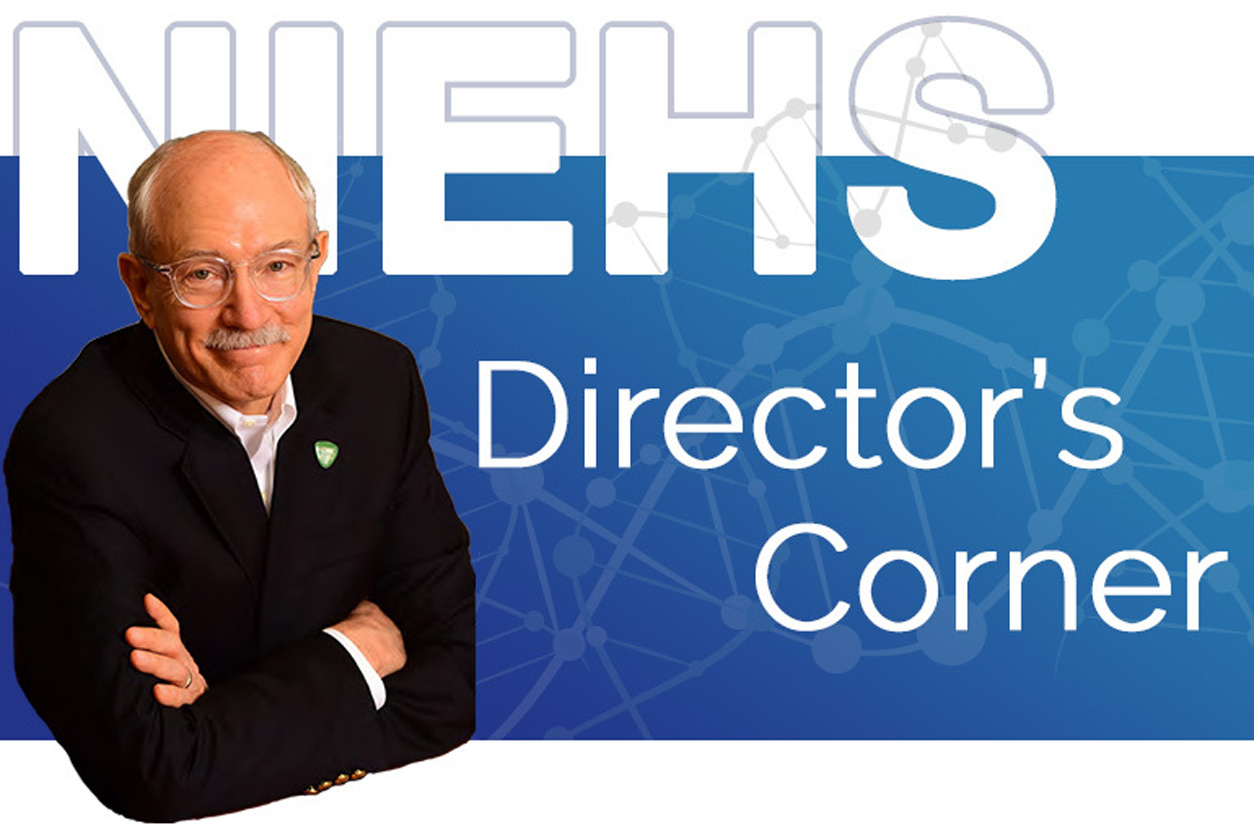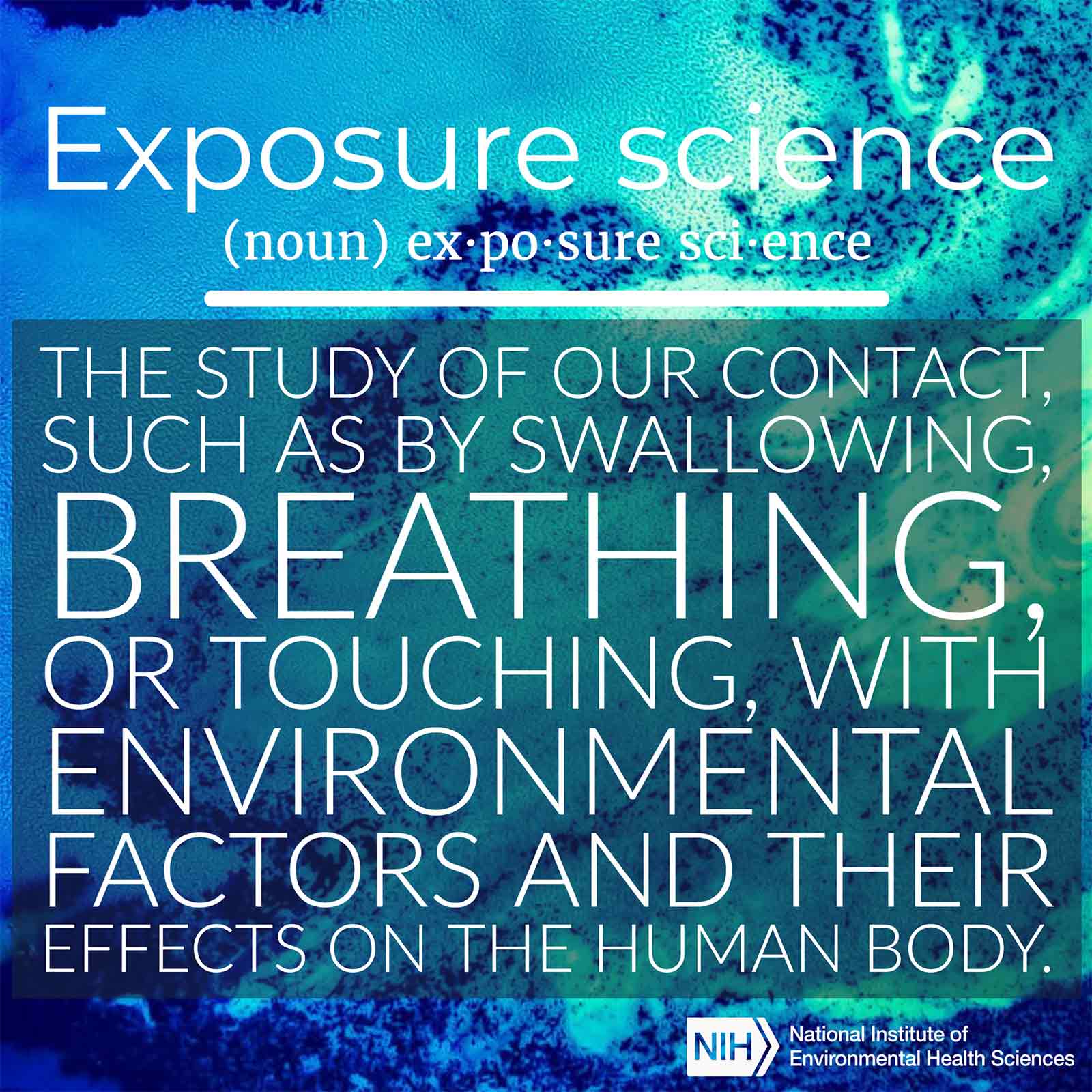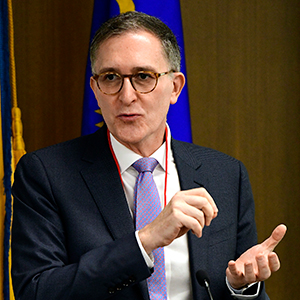The Human Genome Project sparked a paradigm shift in genetics that I believe holds important insights for environmental health scientists. February marked the 20th anniversary of the first draft sequence and analysis of our genetic blueprint, and much has changed in the intervening years.
Instead of analyzing just one gene at a time, many scientists now study an individual’s complete set of DNA. Their work helps to show how we respond to environmental exposures, promising to reveal the molecular changes involved in toxicity. Meanwhile, knowledge has expanded in complementary fields such as metabolomics, proteomics, and transcriptomics. Those fields involve large-scale analyses of metabolites, proteins, and RNA, respectively.
Similarly, many environmental health scientists now realize the benefits of moving beyond studying only one agent in isolation. These researchers embrace an approach for analyzing the multitude of exposures people experience during their lives, which is called the exposome.
 Both innovation and collaboration, which I stressed in my first Director’s Corner column, are critical to expanding exposome research. (Photo courtesy of NIEHS)
Both innovation and collaboration, which I stressed in my first Director’s Corner column, are critical to expanding exposome research. (Photo courtesy of NIEHS)That concept is the focus of my recent conversation with Gary Miller, Ph.D., from Columbia University. He has written two groundbreaking books on the exposome, in addition to studying how different chemicals can influence neurodegeneration. I spoke with Miller, an NIEHS grant recipient, about these and other topics, including his career inspiration (see first sidebar).
The sum of our exposures
Rick Woychik: What exactly is the exposome, and why should scientists and the public care about it?
 Before joining Columbia University, Miller served as founding director of the NIEHS-funded HERCULES Exposome Research Center at Emory University. (Photo courtesy of Gary Miller)
Before joining Columbia University, Miller served as founding director of the NIEHS-funded HERCULES Exposome Research Center at Emory University. (Photo courtesy of Gary Miller)Gary Miller: Learning as much as we can about the external factors that affect human health is at the heart of exposome research. This involves analyzing more than just chemicals. Outside stressors of any sort, whether related to socioeconomic issues, mental health, or lack of green space, for example, are also part of the equation.
The key thing to remember is that if these external forces are going to affect our health, they have to be converted into biochemical signals. In other words, there must be corresponding biological changes, such as epigenetic alterations, which are chemical modifications to DNA that affect gene expression but not the underlying genetic code. So, studying the exposome is about both capturing as many exposures as possible and figuring out how the body responds to them.
Such research is more complicated than analyzing the genome, which is far more static. The exposome changes day to day, month to month, throughout a person’s life. Whatever your body is doing right now is a reflection of this summation of exposures that have occurred, built upon your genome. The idea is to collect as much of that information as we can.
Ultimately, the goal is to design more comprehensive experiments that merge datasets from genomic, exposomic, and proteomic studies, for example. That way, we can build a fuller understanding of how external and internal environmental factors may affect us. In my view, the exposome is not a trendy buzzword but rather an essential aspect of biological sciences.
Paradigm shift
RW: Last year, you published “The Exposome: A New Paradigm for the Environment and Health,” which is an update to your 2013 primer on this concept. You refer to a term coined by the philosopher Thomas Kuhn and suggest that a paradigm shift is needed in the biomedical and environmental health science communities. What would such a shift look like?
GM: Perhaps I can start by explaining how the shift happened in my own thinking. Early in my career, when I studied environmental contributors to Parkinson’s disease, I became frustrated with how the field was approaching such research. It would take the chemical du jour, inject it into a mouse, and see whether it caused Parkinson-related damage.
 “It is my view that environmental health has trailed other fields primarily because until now there has not been an omic-scale toolkit for environmental factors,” wrote Miller in his new book. (Cover art by Michael Waraska)
“It is my view that environmental health has trailed other fields primarily because until now there has not been an omic-scale toolkit for environmental factors,” wrote Miller in his new book. (Cover art by Michael Waraska)Pesticide exposure was considered a risk factor, but I wanted to know what exactly that meant because there are hundreds of different pesticide compounds. In terms of understanding relevant biological mechanisms, it makes sense to learn the effects of an individual chemical, but that is not the reality of our exposures. I sought a more systematic way to test all potential exposures.
A framework I found promising came from genetics, where researchers conduct genome-wide association studies. They analyze many human genomes at once, searching for common genetic variations associated with disease. I wanted to apply a similar approach to the environment. We already have tools and methods that can help the environmental health community develop such capability faster than one might think.
Multi-omics analysis is especially important when it comes to learning more about the origins of disease. We need more studies that incorporate exposomics, genomics, proteomics, transcriptomics, and so forth. By combining all of that information and merging as many relevant datasets as possible, we can develop a pretty good picture of what is happening biologically in a population.
I should add that during the past 20 years, our ability to rapidly analyze large batches of environmental agents has improved dramatically. Whether we are talking about the use of model organisms such as Caenorhabditis elegans and zebrafish, or even high-throughput cellular research that incorporates robotics, we can study more exposures and combinations of exposures than ever before.
Training the next generation
RW: Going forward, one challenge will be to help nonspecialists and the public understand the exposome. For example, family physicians can now receive data on their patients’ genomes, to help with disease prevention. In the same vein, we should strive to one day provide physicians with exposome-related information that complements genetic data and offers opportunities for more effective health interventions.
First, we have to get more environmental health scientists to embrace the paradigm shift you have discussed. How can we change hearts and minds so that these researchers appreciate the need to study the totality of our environmental exposures?
GM: In my view, the cliche about old dogs and new tricks applies here. So, I think that real change is going to come from teaching the next generation of scientists. I work a lot with graduate students and even conduct an exposome boot camp at Columbia. One goal is to introduce students, postdoctoral trainees, junior scientists, and even senior scientists to an unbiased, bigger way of thinking about the environment.
Specifically, we need more researchers who are willing to study environmental exposures on an omics scale and who know that it is possible to do so successfully. That does not mean that we ignore mechanistic understanding of individual chemicals — it just means that we need people who are working across these lines.
For example, if someone is investigating chlorpyrifos, which is an organophosphate insecticide, why not encourage him or her to study all of the organophosphates at the same time to get class-level information? New technology makes it possible to obtain information on many compounds at once, and it does not take much to conduct an experiment that reaches out a bit more.
In addition to expanding environmental health sciences curricula to include courses on the exposome, I think future doctors should learn the topic, too. There has been a big push to include more climate change-related work in medical school, but climate issues are, in many ways, long term in nature, whereas the exposome involves more immediate effects.
COVID-19 provides a case in point. Certain communities, including some low-income and minority populations, have been disproportionately affected by the pandemic. It is not due to their genetics but rather to their exposome writ large. Factors such as air pollution, lack of access to nutrition, and socioeconomic issues are a few examples.
All of us should strive to find ways to capture as much of the exposome as possible, but we need not let perfection be the enemy of the good. Through greater scientific collaboration, innovative thinking, and development of new data science tools, we can break new ground as researchers and help to improve human health along the way.
Citations:
Miller, GW. 2020. The Exposome: A New Paradigm for the Environment and Health. 2nd ed. Cambridge, MA: Academic Press.
Vermeulen R, Schymanski EL, Barabasi AL, Miller GW. 2020. The exposome and health: where chemistry meets biology. Science 367(6476):392–396.
(Rick Woychik, Ph.D., directs NIEHS and the National Toxicology Program.)










